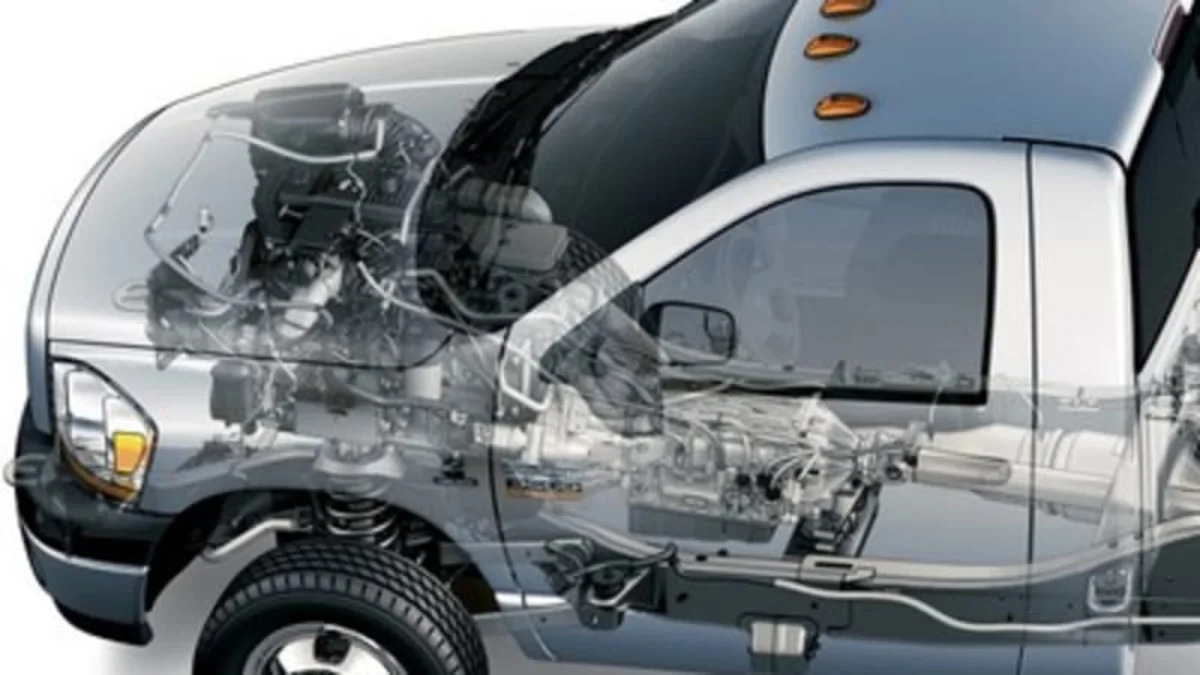The horsepower and torque race in the heavy-duty consumer pickup segment has been brutal in recent years. Consumers often shop by numbers in this category, and nothing matters more than hosepower, lb-ft of torque and tow ratings.
Some observers thought stricter emissions regulations for 2007 diesel engines would slow down the power struggle between Detroit's automakers, the only players in the ¾- and 1-ton pickup market. But Dodge came out swinging Thursday by showing off a new 6.7-liter Cummins turbodiesel that will be available in its 2007 Ram 2500/3500 pickups. The engine made its debut at the Texas state fair, and automotive writers on the West Coast received a preview, as well.
The engine, which replaces the venerable 5.9-liter I6 diesel, is rated at 350 horsepower with 650 lb-ft of peak torque. Current Cummins engines are rated at 325 horsepower and 600 lb-ft.
Even though the engine is bigger and more powerful, it meets 50-state HD emissions standards that require a 90-percent reduction in particulates (or soot) and 50-percent cut in nitrogen oxide (NOx). It's also B5 biodiesel compatible. Engineers say some of the modifications to the engine also offer other consumer benefits, such as less noise and practically no oil smell. Key engine features include:
- Variable geometry turbocharger that matches boost pressure with engine needs. This isn't to be confused with a variable vane turbo. The VGT utilizes 16 fixed vanes and sliding yoke that helps manages air flow to the turbo. A benefit to this system is offering an optional, integrated exhaust brake.
- A water-cooled exhaust-gas recirculation (EGR) helps reduce NOx by reintroducing some spent gas into the intakes system
- Fuel-line pressure is bumped from 1600 bar to 1800 bar (about 26,000 psi), and the fuel-management system can introduce up to four fuel-injection sprays (or events) per combustion cycle. The previous engine was limited to three events.
- A self-cleaning diesel particulate filter to trap soot.
Backing up the new Cummins will be a new 6-speed automatic transmission to help improve fuel economy.
[Source: Yahoo! news]

Sign in to post
Please sign in to leave a comment.
Continue